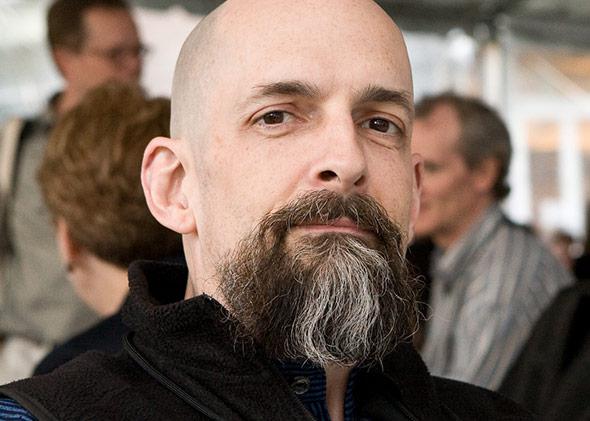The future of The internet lies in UGC
New Evolution of the revolution
The internet has revolutionized the way people interact with each other, share their views and ideas, and consume and produce content. User-generated content, or UGC, has emerged as a powerful force in the digital age, giving rise to new forms of creativity, collaboration, and social interaction.
As UGC continues to grow in popularity and importance, it is changing the way we think about digital economies, ownership, and value. In this article, we will explore how UGC can shape the future of digital economies and what we can learn from Neal Stephenson, the author of Snow Crash, about the role of creators in building stable, valuable digital ecosystems.
UGC is a term used to describe content that is created by users, rather than by professional creators or companies. It can take many forms, including social media posts, blogs, videos, podcasts, memes, and more. UGC is popular because it is authentic, relatable, and engaging. It allows people to express their creativity, connect with others, and build communities around shared interests and values. UGC is also valuable because it can be monetized, either through advertising, sponsorships, or direct payments from fans or followers.
Tons of Impact
UGC has had a profound impact on digital economies, as it has disrupted traditional business models and created new opportunities for creators and consumers alike. UGC has enabled creators to bypass traditional gatekeepers, such as publishers, record labels, and studios, and reach audiences directly. This has democratized access to content creation and consumption and allowed for a more diverse and inclusive digital culture. UGC has also created new revenue streams for creators, as they can monetize their content directly, without the need for intermediaries. This has enabled creators to earn a living from their passion, and has incentivized them to produce high-quality content that resonates with their audience.
UGC has also challenged traditional notions of ownership and value, as it has made it possible for people to own and trade digital assets that were previously considered ephemeral or intangible. UGC can create sentimental value for digital assets, which can make them more valuable to their owners and less likely to be sold or traded. This can create a more stable digital economy, as people are more likely to hold onto assets that have emotional or personal value, rather than purely financial value. UGC can also create scarcity for digital assets, as people can create unique and personalized content that cannot be replicated or duplicated easily. This can increase the value of digital assets and create new opportunities for creators and consumers.
Neal Stephenson
Neal Stephenson, the author of Snow Crash, has long been a proponent of UGC and its potential to shape the future of digital economies. Stephenson coined the term “metaverse” in his novel, which describes a virtual world in which people can interact and own digital assets. Stephenson believes that UGC is key to building a stable and valuable metaverse, as it allows creators to build unique and meaningful content that people will value and hold onto. Stephenson argues that UGC can create sentimental value for digital assets, which can make them less likely to be sold or traded purely for financial gain.

Stephenson believes that UGC can create a more diverse and stable digital economy, which is less reliant on financial speculation and more focused on creating value for users. Stephenson argues that UGC can create a more vibrant and engaged digital culture, as it allows people to express their creativity, connect with others, and build communities around shared interests and values. Stephenson believes that UGC can also create new forms of ownership and value, which are based on personal and emotional connections rather than purely financial transactions.
Stephenson’s vision of the metaverse is one in which people can build and own unique digital assets, which have personal and emotional value. Stephenson believes that UGC can create a sense of ownership and investment in the metaverse, and this can lead to a richer and more fulfilling online experience for individuals.
Ability to create and own
One of the key aspects of the metaverse that Stephenson envisions is the ability for individuals to create and own their own digital assets. This could include anything from virtual clothing and accessories to digital real estate and even entire virtual worlds. Stephenson believes that by giving individuals ownership over these assets, they will feel more invested in the metaverse and its development.
Stephenson also believes that UGC can help to create a more diverse and interesting metaverse. By allowing individuals to create and share their own content, the metaverse will become a reflection of the interests, ideas, and creativity of its users. This can help to create a more engaging and compelling online experience for everyone involved.
However, there are also potential risks associated with the metaverse, particularly when it comes to issues of privacy and security. As the metaverse becomes more sophisticated, it may become increasingly difficult to protect individuals’ personal information and prevent unauthorized access to their digital assets. Stephenson has acknowledged these risks and has suggested that the development of the metaverse should be accompanied by strong privacy and security protections.
Overall, Stephenson’s vision of the metaverse is one that emphasizes the importance of user participation and creativity. By allowing individuals to create and own their own digital assets, the metaverse can become a more engaging and fulfilling online space for everyone involved. However, it will also be important to address the potential risks and challenges associated with the metaverse, in order to ensure that it remains a safe and secure environment for all users.

Thanks for choosing Solanews, follow our social media channels for more!

